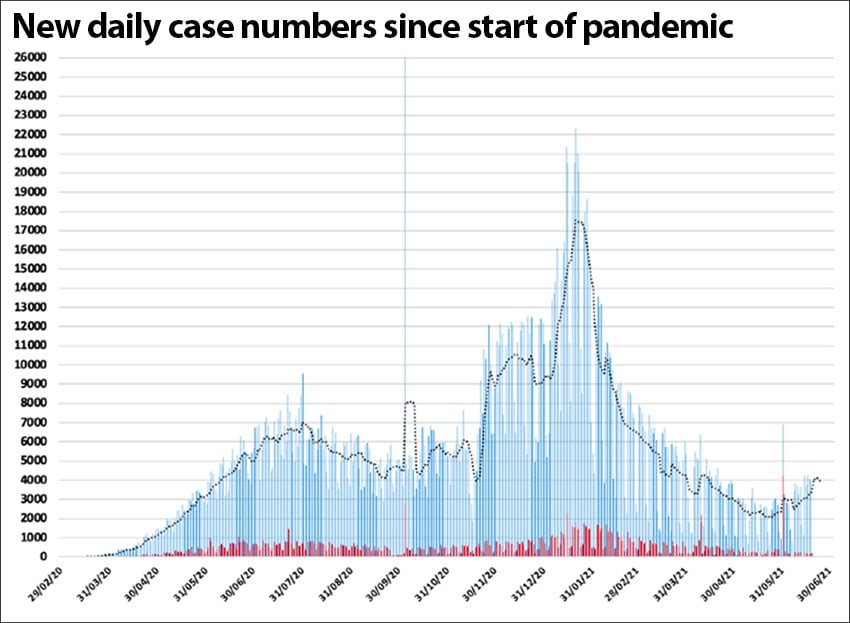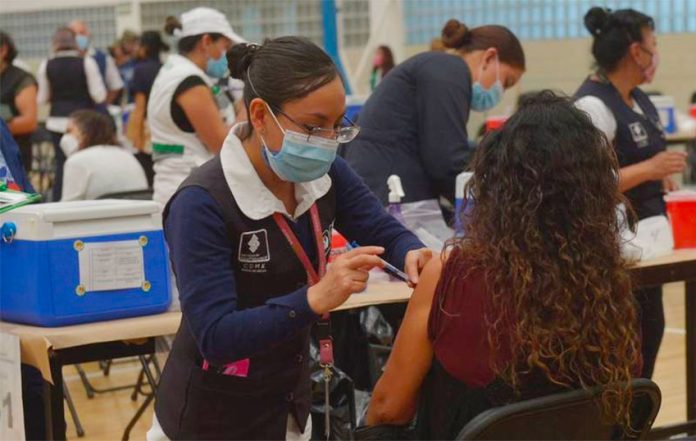A third wave of the coronavirus pandemic appears to be beginning in Mexico, according to an infectious disease doctor who was the federal government’s point man during the swine flu pandemic in 2009.
“It seems in Mexico that a third, less pronounced wave of Covid is beginning,” Alejandro Macías wrote on Twitter, citing case numbers in 10 states in four areas of the country: “1. Baja Californa Sur-Sonora-Sinaloa; 2. Quintana Roo-Yucatán-Campeche-Tabasco: 3. Tamaulipas-Nuevo León; and 4. Mexico City.”
Five of those states – Quintana Roo, Yucatán, Tabasco, Tamaulipas and Baja California Sur – are currently high risk orange on the federal government’s coronavirus stoplight map, while the other five are medium risk yellow.
Mexico City ranks first in the country for estimated active coronavirus cases with more than 6,800 while Tabasco ranks second with 2,407. Yucatán ranks third with 1,967 followed by Baja California Sur (1,783), Tamaulipas (1,355), Quintana Roo (1,353) and México state (1,289), which includes many municipalities that are part of the greater Mexico City metropolitan area.
Macías, who is also a member of the coronavirus commission at the National Autonomous University (UNAM), published a graph beneath his Twitter post that shows reported case numbers and Covid-19 deaths since the start of the pandemic.

The graph shows a significant and sustained decline in case numbers following the second and worst wave of the pandemic in late 2020 and early 2021. However, it also shows that reported infections have trended upwards this month.
The federal Health Ministry reported an average of 3,086 new cases per day during the first 21 days of June, a 38.7% increase compared to the daily average in May, which was 2,225. Reported Covid-19 deaths have increased 70.2% this month to a daily average of 366 compared to 215 in May.
Macías predicted in a second Twitter post on Monday that a third wave of the pandemic will be regionalized rather than being seen across the whole country and young people will be most affected because (most) older people have been vaccinated.
Hopefully it will cause fewer deaths than the first two waves and the demand on hospitals won’t be as great, he wrote. “We will have to coexist with this virus,” Macías added.
Mauricio Rodríguez Álvarez, spokesman for the UNAM coronavirus commission, said there are different causes for the rising case numbers in different parts of the country.
The spikes in Quintana Roo, Yucatán and Baja California Sur are linked to tourism, while the increase in Tabasco is associated with the reopening of the economy, he said.
The increase in cases in Mexico City and Nuevo León could be related to the relaxation of virus mitigation measures, while the recent switch to the orange light risk level in Tamaulipas is linked to the state’s proximity to Texas, Rodríguez said, even though vaccination rates in the United States are much higher than those in Mexico.
Meanwhile, Mexico’s accumulated case tally currently stands at just under 2.48 million while the official Covid-19 death toll is 231,244, a figure considered a vast undercount, mainly due to the low testing rate.
Deputy Health Minister Hugo López-Gatell reported Tuesday morning that 40.7 million Covid-19 vaccine doses have been administered and 28.2 million people have received at least one shot.
The government has so far offered shots to health workers, seniors, people aged 40 to 59 and pregnant women, and has now opened up the vaccination registration process to people aged 30 to 39 across Mexico and residents of northern border municipalities aged 18 or older.
Those wishing to get a shot can register using their CURP identity number on the government’s vaccination website.
With reports from Milenio and El Financiero
